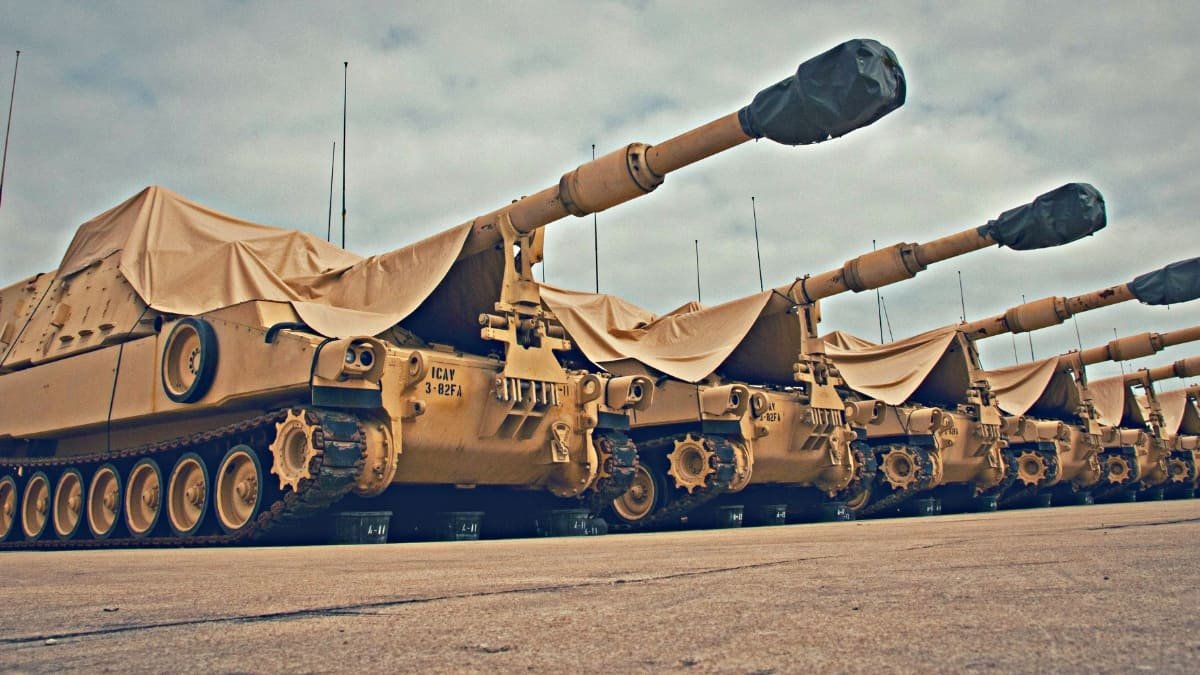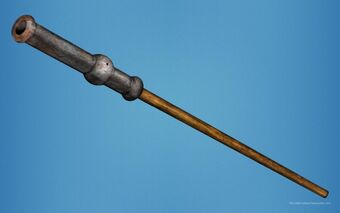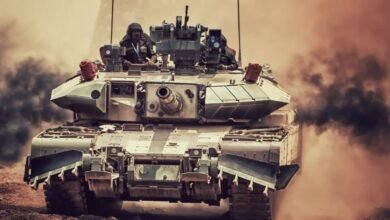Artillery: The God Of War

In conventional warfare, artillery plays a very crucial role. Artillery is not just an arm of the army, it is a way of expressing power over the enemy. Almost every time Artillery is the first response to any misadventure of our neighbor. In this article, we are going to look at the basics of artillery, its evolution, the Mughal Empire’s artillery, and its impact, the classification of artillery, and various roles played by them.
In the next article, we will discuss the Regiment of Artillery of the Indian army, its history and the historical and present artillery systems used by Indian army
What is Artillery
Artillery is a class of heavy military ranged weapons built to launch munitions far beyond the range and power of infantry firearms. Early artillery development focused on the ability to breach defensive walls and fortifications during sieges, and led to heavy, fairly immobile siege engines. As technology improved, lighter, more mobile field artillery cannons developed for battlefield use. This development continues today; modern self-propelled artillery vehicles are highly mobile weapons of great versatility generally providing the largest share of an army’s total firepower.
Great battles are won with artillery
Napoleon Bonaparte
Evolution of Artillery in Brief
The earliest pieces of artillery can be found in ancient Rome somewhere around 8th century B.C. These were very primitive weapons designed to break the walls of gigantic forts during sieges. These machines were actually enormous stone-pelting catapults. These were very different from the artillery we know today. Some of these machines were Ballista ( yes the famous Roman ballista used for spraying arrows), the trebuchet, and various other catapults.


trebuchet
The invention of gun powder in China started a new age. It laid the foundation stone for modern artillery. It is believed that gun powder was invented in ancient China somewhere around the 9th century. it gradually came to Europe. By the 13th century entire Europe had the knowledge of gunpowder. Cannon was the first gunpowder powered artillery followed by mortars. Cannon and Mortar kept on evolving and by the medieval ages, these had become a crucial part of the military campaigns.

Mughal Artillery
“Cannons are the locks and key of a Kingdom”.
Babur
Artillery was not widely employed in Central Asia prior to the 16th century, despite Chinese mortars having been known to the Mongols hundreds of years earlier. Following the decisive Ottoman victory over the Safavid Empire at the 1514 Battle of Chaldiran, Babur incorporated artillery and Ottoman artillery tactics into his military. Babur’s artillery played a “key role” in the establishment of the Mughal Empire.

Babur’s Cannon
In 1526, the First Battle of Panipat saw the introduction of massed artillery tactics to Indian warfare. Artillery remained an important part of the Mughal military, in both field deployment and incorporation into defensive forts. However, transportation of the extremely heavy guns remained problematic, even as weapon technology improved during the reign of Akbar. Under Aurangzeb, the Mughal technology remained superior to that of the breakaway Maratha, but traditional Mughal artillery tactics were difficult to employ against Maratha guerilla raids.

The gigantic Jaivana Cannon
Over the centuries of their reign, the Mughals built the largest artillery (especially cannons) of their time. Extremely heavy artillery was an important part of the Mughal military, especially under its early emperors. Babur deployed guns capable of firing cannonballs weighing between 225 and 315 pounds against a 1527 siege and had previously employed a cannon capable of firing a 540-pound stone ball. Humayun did not field such massive artillery at the Battle of Kanauj in 1540, but still had heavy cannons, capable of firing 46-pound lead balls.
These large weapons were often given heroic names. They were not only weapons but “real works of art”. Their artistry did not make them easier to move, however. Rugged passes and water crossings were insurmountable barriers, and even when they could be moved, it was a slow process requiring sixteen to twenty oxen or five to six elephants. The largest such weapons, such as Muhammad Shah’s “Fort Opener”, required a team of “four elephants and thousands of oxen” and only rarely reached their siege targets. Other heavy artillery included mortars and mines deployed by sappers against fortress walls. Although these weapons had noticeable successes, such as the victory at the Siege of Chittorgarh in 1567, their preparation and deployment came at the cost of substantial Mughal losses.
Modern Artillery
With the Napoleonic Wars, artillery experienced changes in both physical design and operation. Napoleon laid the foundation stone of the concepts of modern artillery. Under him, artillery became a separate arm of the army and achieved the capability of dominating the battlefield. The success of the French artillery companies was at least in part due to the presence of specifically artillery officers leading and coordinating during the chaos of battle. Napoleon, himself a former artillery officer, perfected the tactic of massed artillery batteries unleashed upon a critical point in his enemies’ line as a prelude to a decisive infantry and cavalry assault.
God is on the side of heaviest artillery
Napoleon
The development of modern artillery occurred in the mid to late 19th century as a result of the convergence of various improvements in the underlying technology. Advances in metallurgy allowed for the construction of breech-loading rifled guns that could fire at much greater muzzle velocity.
Also Read, Full List Of India’s Air Defence Systems
Classification of Artillery
There are various kinds of artillery in service like Field artillery, Air Defence Artillery, Coastal artillery, etc. Ground-based artillery which takes part in land warfare is termed as Field artillery.
Field Artillery weapon systems are classified based on size, bore diameter, weight, mobility, and its suitability of employment. These are as follows:-
Infantry Support Guns
These are direct firing weapons of higher caliber viz., 106mm recoilless rifle (RCL), automatic grenade launcher (AGL) 81mm mortars, etc.

original rcl gun of CQM Abdul hamid, PVC
Mountain Guns
These are lightweight guns that can be moved through inhospitable mountainous terrain. Indian manufactured 75/24 howitzers and British 3.7-inch howitzers are examples of mountain guns. Such guns can be dismantled and taken on mules or even physically carried by the soldiers.
Field Guns
These are capable of firing over long ranges. They generally fire at a low angle up to 45-degree elevation. The Russian 100mm gun and 130mm guns and the British 25 pounder gun are examples of field guns.
Howitzers
These are the guns which can fire both in low and high angle. Such guns are capable of engaging targets behind hills and ridges where field guns cannot succeed. Almost all modern gun systems are howitzers.
Mortar
Mortars fire only at a high angle. They look different than a gun. Typically they are short-barreled, high trajectory weapons with a range substantially less than field guns.
Rocket Artillery
These are rocket-propelled artillery systems with a large warhead. They are used to destroy a specific area on the ground. During the Indo-Pak Conflict 1999 in Kargil, Indian artillery utilized the Russian BM 21 rocket artillery system in direct firing role on Tiger Hill with devastating effect.
Cruise Missile
These are later addition to artillery. They use a combination of rockets and advanced inertial navigation systems with large warheads to destroy targets up to 300 km. Indian BrahMos supersonic cruise missile and US subsonic Tomahawk are examples of this artillery system.
Surface to Surface Missile
These transcend conventional and strategic spectrum. Indian Prithvi and Agni missiles both with conventional and nuclear warheads, can engage targets over long distances up to 5000 km. Agni missiles, K4, and k12 fall under this category.
Also Read, Service Rifles of Indian Army: 1947-Present
Application of Artillery Firepower
Modern Warfare is a complex system of incorporation, coordination, and application of multifarious systems, technology, and the decision-making process. Since battles do not generally follow a set procedure, field artillery too has adapted many specializations and centers of excellence to cater to all kinds of eventualities. The kind of field artillery fires that are likely to be called during the various stages of battles are as follows:-
- Pre-arranged Fire. These are such artillery engagements that are planned in advance with a view to causing desired levels of neutralization and destruction of the enemy.
- Opportunity Fire. These are artillery engagements based on fleeting opportunities to take advantage of an operational situation. Generally, in such engagements, limited numbers of guns are employed.
- Observed Fire. These can be pre-arranged or opportunity fires. The artillery observers engage the enemy by observing the landing of the artillery shells near the enemy and correcting it by using various methods and technologies.
- Predicted Fire. These are unobserved fires. Technical firing data for such fires are worked out much in advance by using various technical means. Larger numbers of guns are employed in the predicted fire, viz., artillery “Fire Plan” to support an attack by infantry or tanks. It provides maximum surprise on the enemy.
- Degradation Fire. These artillery engagements aim towards degrading the enemy’s operational capability prior to the offensive operations. The use of air power in conjunction with artillery firepower also forms part of degradation fire.
- Counter Bombardment. It aims in engaging and silencing enemy guns and other artillery weapon systems in an operational situation.
- Interdiction Fire. It aims at interdicting the enemy’s movements, preparation for battle, tank harbors, logistics areas, etc., with a view to substantially degrade its combat power by causing heavy losses.
- Covering Fire. It is the provision of artillery cover to the movement of own troops in battle and during close combat, so that enemy’s fire delivery means are made ineffective.
- Defensive Fire. It is the provision of artillery support to own forces in defensive battles. It aims to cause heavy damage to the enemy’s forces attacking their own defences.
- Harassing Fire. It aims to harass the enemy by engaging it at odd times and situations, so as not to give it the comfort of safety and creating the fear of the unknown in their mind. It aims towards affecting the morale and mental strength of the enemy. It has both short and long term adverse effect on the enemy soldiers.
- Preparatory fire. These artillery engagements are used prior to the commencement of attacks on the enemy. These can be observed or predicted.
The battlefields of the 21st century are likely to be of high intensity and technology-driven. The future warfare will demand generation of massive firepower asymmetries over the adversary through ground-based and aerially delivered firepower and ballistic missile systems. Multidimensional firepower is necessary to maximize shock and disruption. The primary equipment to achieve this level of operational violence in land battles is the artillery weapon systems. Among this firepower delivery platforms, the ground-based artillery systems take prominence due to its large numbers and variety of firing platforms and its ability to influence ground battles.
Artillery has shaped our history and has changed the outcomes of many battles over the ages. It is a vital organ of the army even today and will remain so in the future.
















I’d must examine with you here. Which isn’t one thing I often do! I take pleasure in reading a submit that may make individuals think. Additionally, thanks for permitting me to comment!
BTW, the quote attributed to Napoleon, “God is on the side of heaviest artillery” is just an old French expression, maybe first said by Viscount Turenne, “fortune was for the big battalions”, etc. It’s a great quote, but it shouldn’t be credited to Bonaparte.